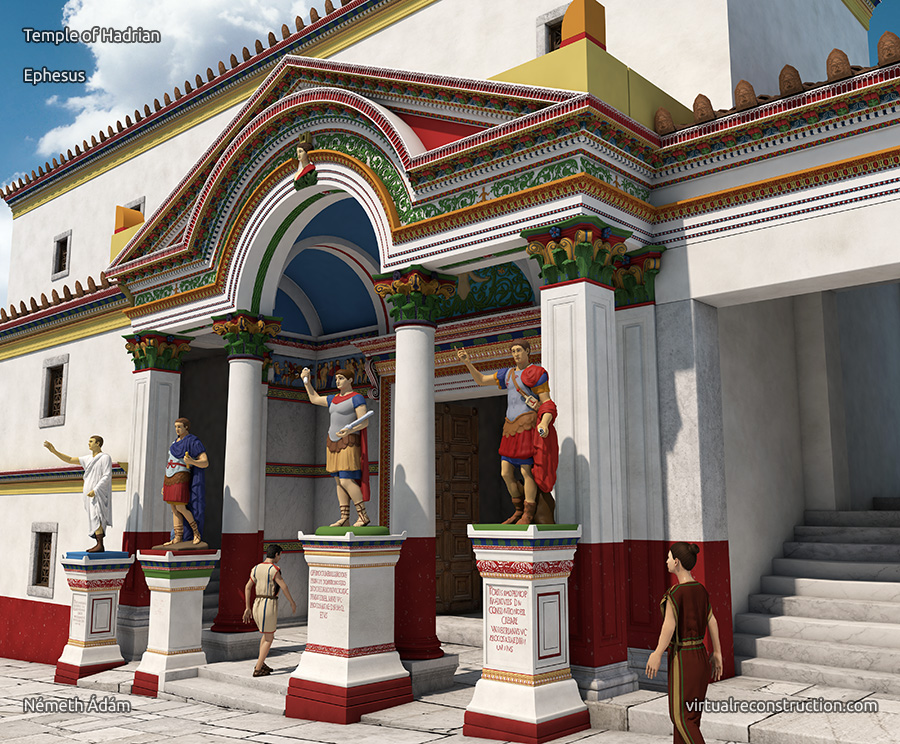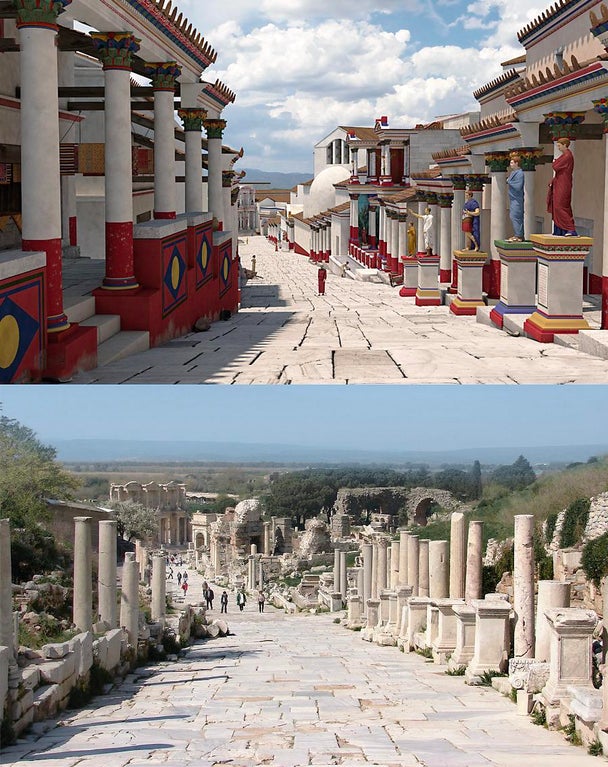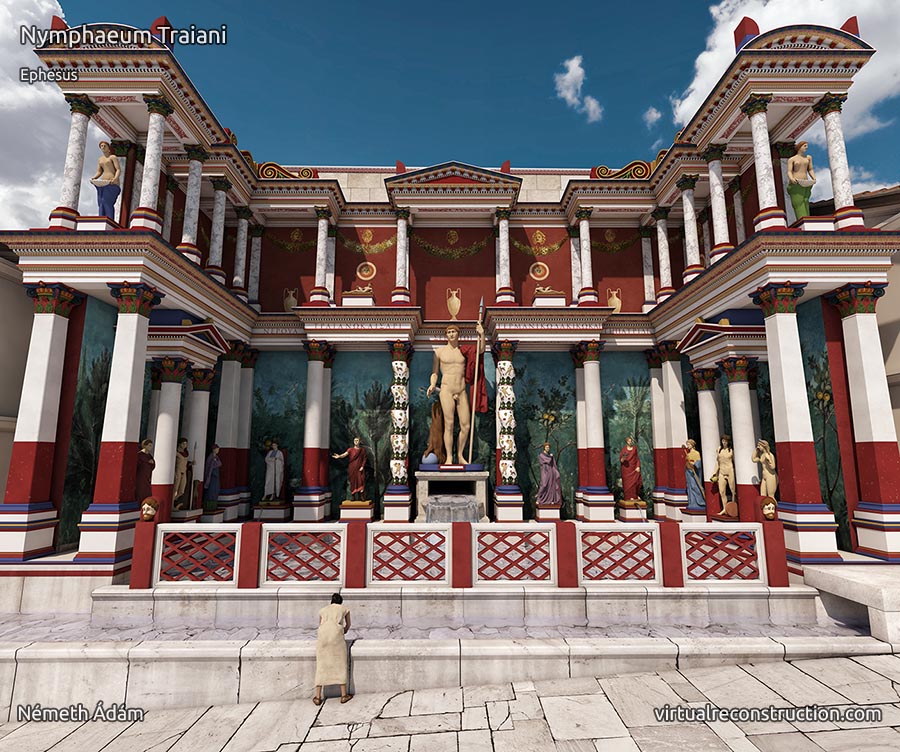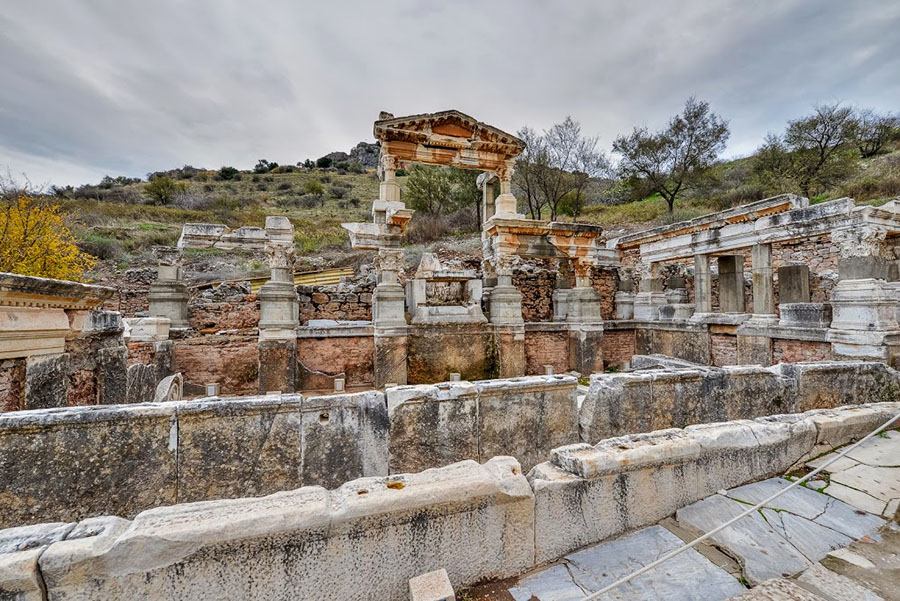
Ancient Greeks did not live among ruins. This is, of course, an obvious truth, but one we run the risk of forgetting if we watch too many historical fantasies set in their time and place as popularly imagined. That Western civilization as we know it today came to know Ancient Greece through the ravaged built environments left behind has colored its modern-day perception — or, rather drained it of color. In recent years, a big deal has been made about the finding that Ancient Greek statues weren’t originally pure white, but painted in bright hues that faded away over the centuries. What does that imply for the rest of the place?

We don’t have a time machine in which to travel back to Ancient Greece and have a look around. We do, however, have the digital reconstructions of artist Ádám Németh. “My archaeological renderings are accurate to the time period, due to extensive research on references and reviews of sources found online, in libraries and in museums, and also ongoing discussions with archaeologists,” he writes.
“My main goal, through reconstructions, is to make history interesting and accessible for everybody.” Even those more or less ignorant of the ancient world can take a glance at his images of an intact and colorful Temple of Hadrian, Curetes Street, and Fountain of Trajan.

All of these sites were located in the Ancient Greek city of Ephesus, now a part of Turkey. Though it doesn’t draw quite the numbers of, say, Hagia Sophia, Ephesus stands nevertheless as a pillar of Turkish tourism. Indeed, you can go there and examine its actual pillars, none of which have come through the ages standing anything like as mightily Németh depicts them. Comparisons posted by Marina Amaral on Twitter put former glory alongside current ruin, though even the Temple of Hadrian, Curetes Street, and the Fountain of Trajan as they are today have been pieced together into a somewhat more complete state than that in which they were rediscovered. Even real antiquity, in other words, is to some degree a reconstruction. See more of Németh’s reconstructions here.

via Marina Amaral
Related Content:
How Ancient Greek Statues Really Looked: Research Reveals Their Bold, Bright Colors and Patterns
Watch Art on Ancient Greek Vases Come to Life with 21st Century Animation
What Did Ancient Greek Music Sound Like?: Listen to a Reconstruction That’s ‘100% Accurate’
Based in Seoul, Colin Marshall writes and broadcasts on cities, language, and culture. His projects include the Substack newsletter Books on Cities, the book The Stateless City: a Walk through 21st-Century Los Angeles and the video series The City in Cinema. Follow him on Twitter at @colinmarshall or on Facebook.


This pairs nicely with the opening credits to ROME. https://youtu.be/6BZmK3_IIZg
1. Ephesus was originally part of Ionia not Greece.
2. The time frame of the buildings and structures rendered in this work were not of Ionian period but Roman Era, as emperors Trajanus and Hadrianus were all Roman, not Ionian or Greek.
So the title should have said how an ancient Roman city looked like…
1) Ionia was a league of Greek settlements (and originally a Greek sub-clan of people the ίωνες)
2) While you are correct Roman architecture is more or less just adaptations of Greek and especially with all the colonies changing hands all the time its almost impossible to tell when ones political and artistic influence starts and ends. So the title still works cause there were cities like that in mainland Greece (possible even more colourful though)
Ionians were Greeks…Ephesus was a city in Ancient Greece on the coast of Ionia which is now part of Turkey.
It was built in the 10th century BC by Attic and Ionian Greek colonists. During the Classical Greek era, it was one of twelve cities that were members of the Ionian League. The city came under the control of the Roman Republic in 129 BC.
All monuments you mentionned is from the Roman periode not grec. And it is not Grece it isa a Anatolia.
Well, after the Indian tribe of Mycenaeans wiped out the Minoans (who had also been expanding and crushing smaller people’s) ushering in a dark age, the Ionians followed the Dorians down mixing and displacing the Mycenaeans … and so we know those 2 (actually 4) groups now as “Greeks”.
It’s true that Rome found/conquered the Greeks all along the Mediterranean coast and adopted most of the artistic and intellectual layer of their civilization from Greece. Those poor and diminished Greeks were later driven or killed out of what is now Turkey, much to Turkey’s loss of potential creative diversity.
The Anatolian Greek/Roman cities were, IMHO, the peak of human architecture worldwide. Some of the institutions of philosophy, naturalism, democracy were also among the best insitituions produced by humanity.